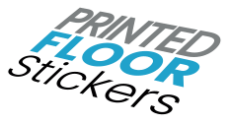Artwork FAQs
Need help with your print order? Our expert team are on hand 24 hours a day, 6 days a week, offering full guidance and support from enquiry to delivery.
Take a look at our guides below or if you have any other questions, don’t hesitate to get in touch!
How to setup your artwork
Artwork is preferred in PDF file format, but our team can also work with InDesign, Illustrator and Photoshop source files, like JPEGs and TIFFs. Microsoft file formats such as Word, Publisher and PowerPoint are also accepted. Please don’t send us an interactive PDF, as these are designed to be used for other media types and won’t be suitable for printing.
It’s best to design your artwork in the same dimensions as your product, if possible. You can download templates for the most commonly available sizes on our templates page.
Be sure to include at least 3mm of bleed in your design. (For more information on bleed and safe zones, please see the below.)
All artwork is checked by our team before going to print, and we’ll contact you if there is a problem.
Bleed and Safe Zones
What are bleed and safe zone?
A cutter guide is a stroke outline around your print artwork which matches the shape of the finished product. If you’re looking to order custom-shaped die-cut printed products, your artwork will need to include a cutter guide.
The cutter guide is sent off to our die-cutters, who then assemble a cutter block with a bespoke-shaped blade which enables us to cut your printed products to the desired shape.
When creating the cutter guide outline in your artwork file, please use a 1pt stroke in a separate spot colour to your artwork and rename the layer to ‘cutter’. Use magenta, red or green for the stroke colour, as these will be clearly visible on the final PDF.
Our team also has an ever-growing library of ready-made cutter blocks in a range of versatile shapes. To find out which shapes are available, simply get in touch!
Cutter guides
What are cutter guides?
A cutter guide is a stroke outline around your print artwork which matches the shape of the finished product. If you’re looking to order custom-shaped die-cut printed products, your artwork will need to include a cutter guide.
The cutter guide is sent off to our die-cutters, who then assemble a cutter block with a bespoke-shaped blade which enables us to cut your printed products to the desired shape.
When creating the cutter guide outline in your artwork file, please use a 1pt stroke in a separate spot colour to your artwork and rename the layer to ‘cutter’. Use magenta, red or green for the stroke colour, as these will be clearly visible on the final PDF.
Our team also has an ever-growing library of ready-made cutter blocks in a range of versatile shapes. To find out which shapes are available, simply get in touch!
Variable data print
How do I set up a variable data print?
Variable data printing enables you to personalise each individual product in your order, by printing data entries ‘on top’ of your artwork.
To set up a variable data print run, you’ll need to supply a ‘base’ artwork file (featuring all the design elements which will be shared across the whole print run) and a spreadsheet file listing all the variable elements you want to print.
When creating your artwork file, be sure to indicate the areas where you’d like your variable elements to be printed. It’s best to put any placeholder elements on a separate layer to the rest of your artwork, and don’t forget to rename the layer with a clear title (e.g. ‘variable print elements’) to prevent it getting confused with the rest of your design.
Your spreadsheet file can be created in programs such as Microsoft Excel or Open Office. Place each variable word, phrase, number or image/graphic filename in a separate row. (If you’re looking to print variable images/graphics, same each one as a separate file and send them to us in a folder along with your artwork and spreadsheet files.)
If you’re looking to print multiple variable elements, create columns for each element and give them relevant names (e.g. ‘Names’, ‘Addresses’, ‘Barcodes’ etc.). Each row should contain all the elements to be printed on any given product in their appropriate columns.
Need help with your variable print order? Our team is always happy to assist – simply drop us a line!
Indicate area for foiling/spot UV
How should I indicate area for foiling/spot uv/variable printing etc?
If you’re looking to add finishing extras (such as foil stamping, Spot UV varnish, embossing/debossing etc.) or variable-printed elements to your design, you’ll likely want to indicate the areas where these elements will be located in the finished print.
Copy the relevant elements onto a separate layer in your design software and give the layer a relevant name or contact us directly with your requirements.
Call 02380 878030 or email us to speak to our sales team today.
Check artwork before submitting
What should I check before submitting my artwork?
Here’s a handy checklist for ensuring your artwork is ready to print. (If you’re unsure about any of these, contact us for help!)
- Check that all spelling and grammar is correct
- Check that you’re 100% happy with the layout, style and content of your design
- Check that you’ve saved your artwork in the correct file type. High resolution (press quality) 300dpi PDFs are preferred, but our team can work with other file types if necessary
- Check that all images used in your artwork are in 300dpi resolution at actual print size
- Check that all fonts are embedded, converted to outlines or supplied as font files with your artwork
- If you’re supplying your artwork as a project file tied to a particular design software (such as Adobe Indesign or Illustrator), check that all fonts and images are included and embedded
- To prevent inaccurate colour reproduction, check that your artwork is saved in CMYK mode and all images have been converted to CMYK
- Check that you’ve included at least 3mm of bleed in your design (see Bleed Area section above for more details)
- Check that any spot colours have been set up correctly
- If you’re designing a product with multiple pages and you’re submitting your artwork as a PDF, check that the artwork is arranged in single pages rather than side-by-side page spreads
- If you’re ordering custom-shaped products, check that you’ve included a cutter guide (see above for more details)
Upload Artwork
How do I upload my artwork?
If you’re ordering online, you’ll be prompted with a section to upload your artwork before submitting your order. Alternatively, if you’re ordering via phone or our contact form, you can email your artwork to our friendly team. Check out our Contact Page for details.
What if the artwork is yoo big to upload?
If you’re having trouble uploading or emailing your artwork due to file size limitations, our team can also accept artwork via WeTransfer or FTP. Contact us for more details.
What will my print look like
How will I know if my artwork will look good in print?
We carry out a free artwork check on every order, and we’ll send you a free digital PDF proof for you to inspect before going to print.
Please check the proof carefully before sending us your approval, as we cannot be held responsible for any errors that occur after the proof has been approved.
What are these red lines on my proofs?
Don’t worry, these lines will not appear on your final print! These lines indicate the safe zone (as explained above). Make sure no important elements of your print appear outside the safe zone (such as text or icons) to ensure they won’t be cut off during trimming.
Design services
What if I don’t want to create my own artwork?
We’ve got you covered! We offer three different design services, ranging from basic edits to a full, complete, bespoke design. Take a look at our ‘Artwork Design Services’ page for more information.
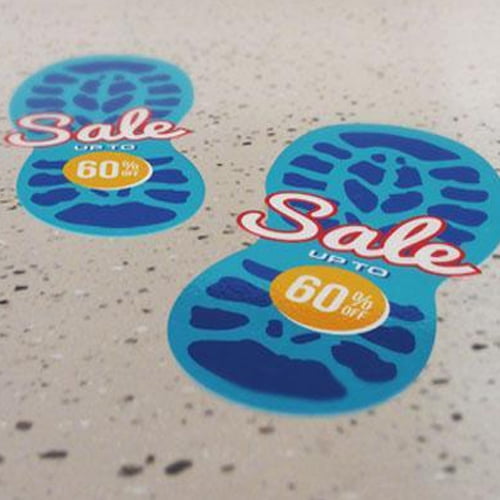
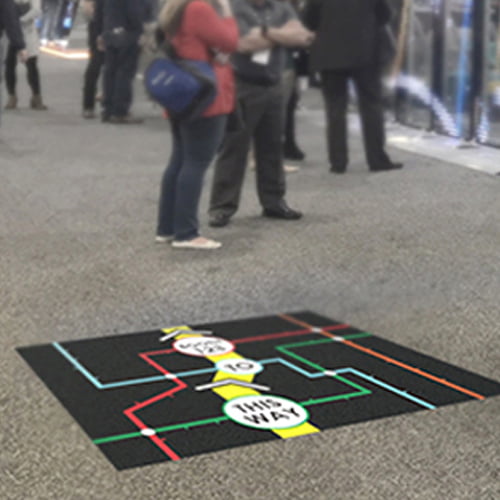
General FAQs
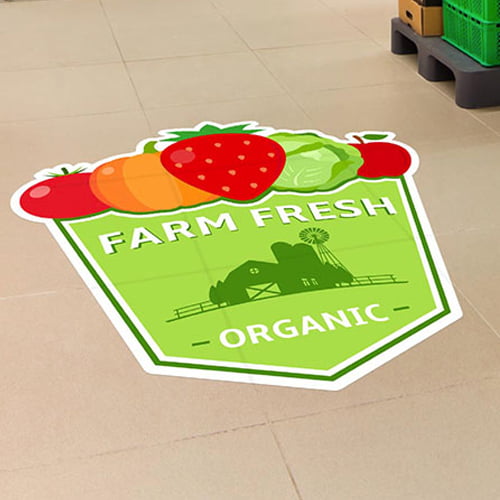
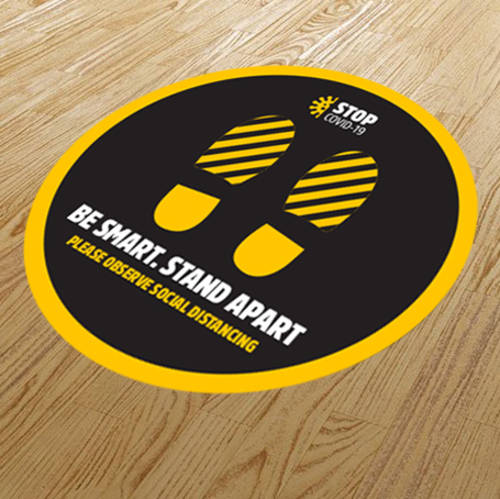
Delivery
When will I receive my order?
This varies between products but we can usually deliver within 3-7 working days. Your email confirmation will include an estimated delivery date but should you need an order urgently, we do offer priority delivery; please get in touch for more details.
Can you deliver outside of the UK?
Yes, we’ll be able to confirm the cost of delivery once the weight and dimensions of the delivery is known. Please note that there may be additional customs charges.
Can you distribute my print for me?
Yes, we can send to one or more addresses for you either by Royal Mail or by a tracked courier service. There’ll be an extra charge for each delivery.
Can you deliver to my customer under a plain cover?
Yes, just let us know that this is a requirement and we’ll ensure that the delivery note/packaging is completely unbranded. We never enclose invoices with our deliveries.
Can I track my delivery?
Most of our deliveries are sent using DPD who provide a 1 hour time slot for delivery. We occasionally use other couriers so if the tracking link and one hour delivery window is important then just let us know and we’ll ensure your print job is delivered by DPD.
Eco-conscious
Are you eco-conscious?
Yes – all our paper stocks are sourced from FSC approved stockists. We recycle all our waste paper and ink/toner cartridges and our lithographic inks are 100% vegetable based. For further information, please visit our ‘Environment’ page, under ‘About Us’.
Can my print be recycled after use?
All of our paper stocks are fully recyclable as long as lamination is applied to a maximum of just one side.
Including the FSC logo in my print
How do I include the FSC logo in my print?
We’ll contact FSC on your behalf to seek approval to print the logo. The FSC claim will relate to the claim on the paper being used (most commonly FSC recycled or FSC mix). Once permission to use the logo has been granted, our pre-press team will add the appropriate FSC logo and claim to your artwork and a PDF proof will be sent to you for approval.
Print Colours
How many colours can I have printed?
As many as you like. We print by mixing Blue (otherwise known as cyan), red (otherwise known as magenta) yellow and black. This is referred to as CMYK and from these 4 colours we can produce all the colours of the rainbow.
Do I pay for each colour I have printed?
There is sometimes a reduced cost for black only printing but if you’re having colour print then you can include as many colours as you like at no extra cost. There would only be an additional cost if you require a Pantone colour (this is where a specific ink is used rather than creating the colour from the standard (CMYK) 4 colour process.
Single & double sided printing
What does single / double sided printing mean?
Most of our printed products (excluding brochures) are printed using a single sheet of paper. We print on one side of the sheet for single sided printing and on both sides of the sheet for double sided printing.
If you’re ordering a product that will be folded and no print is required on the inside, (e.g. document corners) or will enclose your product (e.g. box sleeves, belly bands, pillow boxes etc) then these will usually be printed single sided so that once the sheet is trimmed down and folded or joined you will see print on all sides (front and back for a folded item or on all 4 outer sides for a box sleeve or pillow box).
Print order proofs
Can I see a finished sample before placing my order?
PDF proofs will be sent by email for your approval as standard. There is no charge for this.
For digital and large format printed jobs we can send you a printed sample if required – there may be a small charge for this to cover costs.
For litho printed jobs we can send you a printed proof via our Epson SureColour P7000 which is calibrated with the litho presses; we can also supply you with samples of paper and unprinted brochure mock ups. There may be a small charge for this service.
Placing an order assistance
I haven’t ordered print before…
No worries! Our friendly sales team are on hand to talk you through the process without the use of jargon. Our design team are available to help with artwork and our pre-press and production teams will check the quality at all stages.
Rest assured – your print run is in experienced hands.
Lithographic & digital printing
What’s the difference between Lithographic (litho) and digital printing?
These days there is very little difference in terms of quality between the 2 methods and you’d be hard pushed to tell which printing method had been used when examining a finished product.
Lithographic printing is cost effective for larger runs and can accommodate a larger sheet size of up to B2.
Digital printing is cost effective for smaller runs and is limited to a sheet size of A3.
Our sales team will select the most suitable method for you but if you have a particular preference for litho printing (e.g. if pantone colours are required) then just let our team know.
Large format printing
What does large printing mean?
Our large format printers can print up to 3 meters in width with no limit to length. Large format printing is used for banners, roller banners and printed boards.
